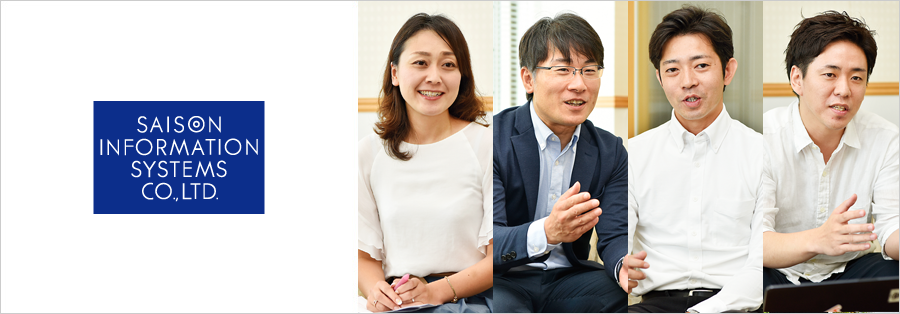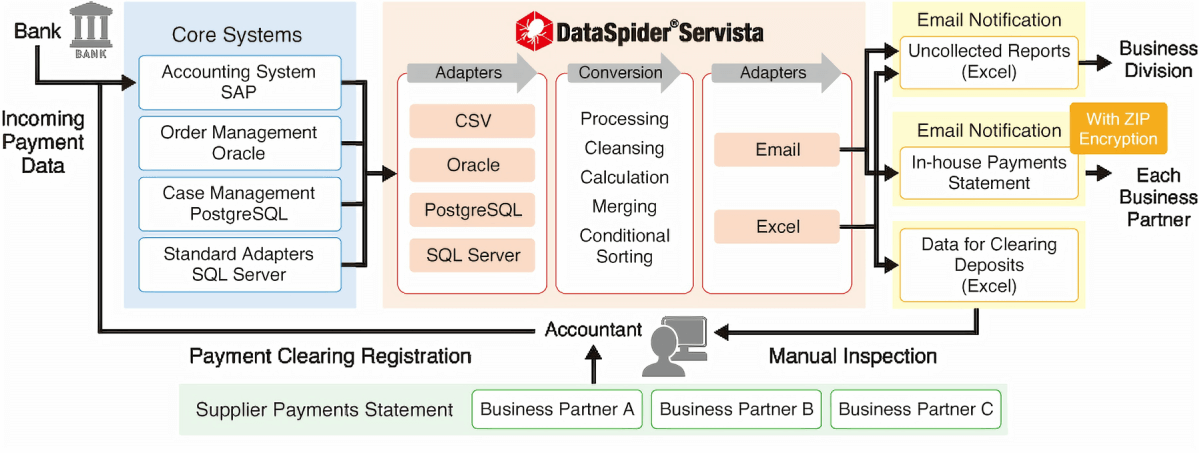Saison Information Systems Using DataSpider Servista

Enterprise Software Vendor Automates Accounting Operations
USER PROFILE
Saison Information System Co., Ltd. (herein, "Saison") was established in 1970 to integrate the information processing functions of the Seibu Distribution Group (currently the Saison Group) and create a new information service business. Presently involved in the development of systems for credit card business, and providing a variety of solutions such as ASP services, central management services, and packaged products including HULFT, which has a high market share in file transfer software.
Saison uses the DataSpider Servista (herein, "DataSpider") platform for data integration to streamline its marketing operations. DataSpider features numerous adapters that connect different systems to automate accounting operations.

Seiko Yokoi
Corporate Planning Department

Shuji Takahashi
Manager
Information Systems Dept.

Takeo Tanaka
Information Systems Dept.

Takamasa Sasaki
Information Systems Dept.
Results
 Set Up Time
Set Up Time
2 Weeks
 Manual Work Hours
Manual Work Hours
Reduced by
300-hours per year
 In-house Payment Statement
In-house Payment Statement
Completely Automated
Background: Urgent Need to Streamline Accounting Operations
Re-Thinking a Labor-Intensive Process

DataSpider Enabled Rapid and Efficient Implementation
Results: Operations Reformed in Just Two Months
Learn More About DataSpider Servista
Notes
- HULFT and other products related to HULFT are registered trademarks or trademarks of Saison Information Systems Co., Ltd.
- DataSpider Servista is a registered trademark of APPRESSO K.K.
- Oracle is a registered trademark of Oracle Corporation and its subsidiaries and affiliates in the United States and other countries.
- PostgreSQL is a registered trademark or a trademark of PostgreSQL in the United States and other countries.
- SAP is a registered trademark or a trademark of SAP SE in Germany and other countries.
- Tableau is a registered trademark or a trademark of Tableau Software Inc.
- Microsoft, Windows, Microsoft Azure, Excel and SQL Server are registered trademarks or trademarks of Microsoft Corporation in the United States and other countries.
- kintone is a registered trademark of Cybozu Corporation.
- The company names and product names described in this document are trademarks or registered trademarks of their respective companies.
- Trademark notations (TM, ®) are not necessarily added to the system name, product name, etc. described in this document.
- The information in this document is current as of September 2017 and is subject to change without notice.
